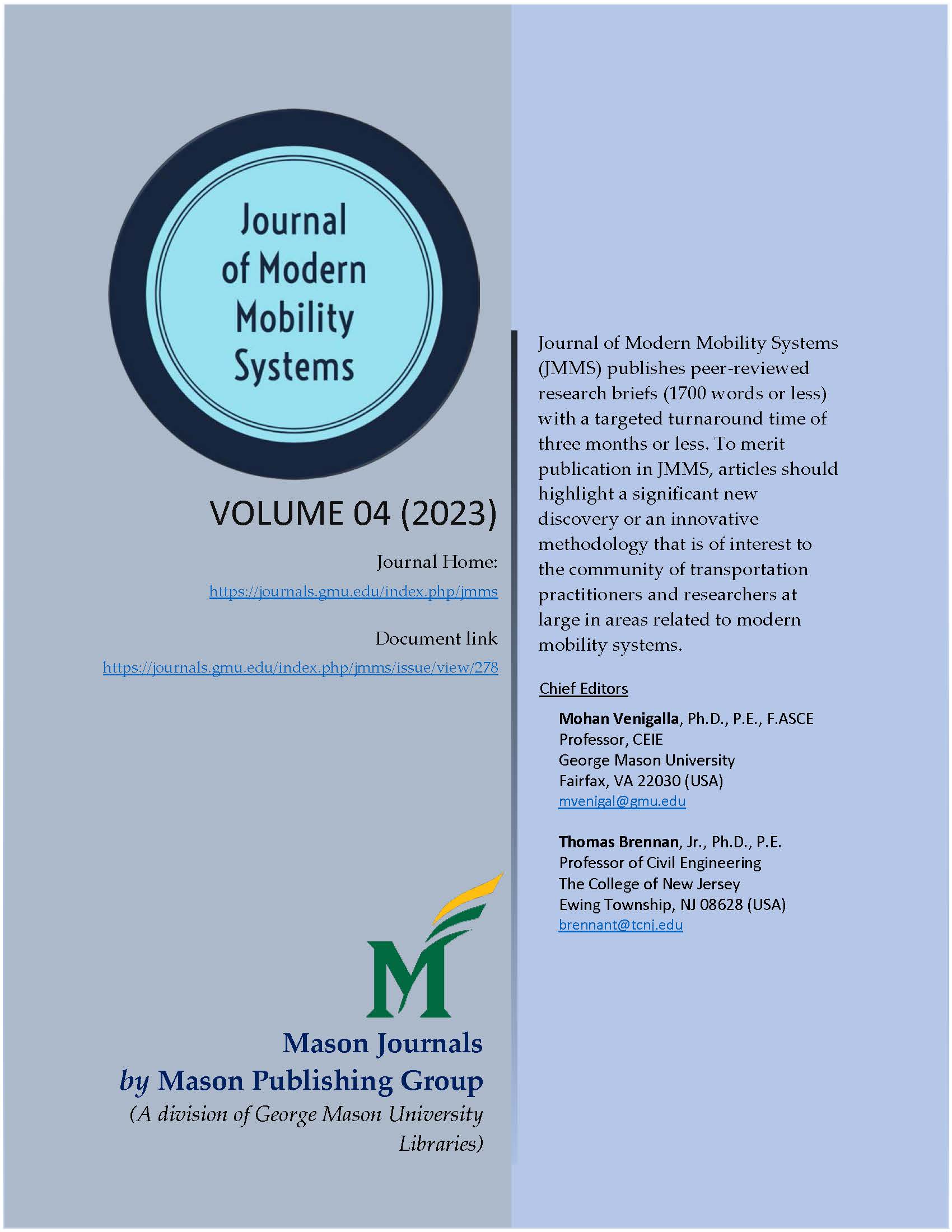Intersection Sight DIstance Parameters for Horse-Drawn Vehicles
DOI:
https://doi.org/10.13021/jmms.2023.3952Keywords:
Roads & Highways, safety, intersection sight distance, non-motorized, horse-drawn vehicles, AmishAbstract
Current intersection sight distance design parameters may not adequately accommodate horse-drawn vehicles which are present in significant numbers in some rural areas of the United States. This study examined the intersection sight distance case for two-way, stop-controlled intersections (stop on the minor road) for horse-drawn vehicles. The eye height of a horse-drawn vehicle driver was found to average 5.8 feet, noticeably higher than the standard value used for passenger cars, but less than that used for trucks. The stopping position of horse-drawn vehicle drivers was found to be further from the edge of travelled way of the major road than for motorized traffic, at an average distance of 27.2 feet. Analysis of accepted and rejected gaps for left turns, right turns and crossing maneuvers suggests that the critical gaps for horse-drawn vehicles are noticeably longer than for either passenger cars or trucks and range from 12 to 14 seconds.
References
Manns, M., Indiana’s Amish Population. IN Context: Vol 13, No. 6. Indiana Business Research Center, Indiana University Kelley School of Business, Bloomington, IN. 2012.
AASHTO. Policy on Geometric Design of Highways and Streets, Seventh Edition. American Association of State High-way and Transportation Officials, Washington, DC, 2018.
Harwood, D. W., J. M. Mason, R. E. Brydia, M. T. Pietrucha, and G. L. Gittings. National Cooperative Highway Research Program Report 383: Intersection Sight Distance. NCHRP, Transportation Research Board, National Research Council, Washington, DC, 1996.
Raff, M. S., and Hart, J. W., A Volume Warrant for Stop Signs, Eno Foundation for Highway Traffic Control, 1950.
Downloads
Published
Issue
Section
License
Copyright (c) 2023 Journal of Modern Mobility Systems

This work is licensed under a Creative Commons Attribution-NonCommercial-ShareAlike 4.0 International License.





